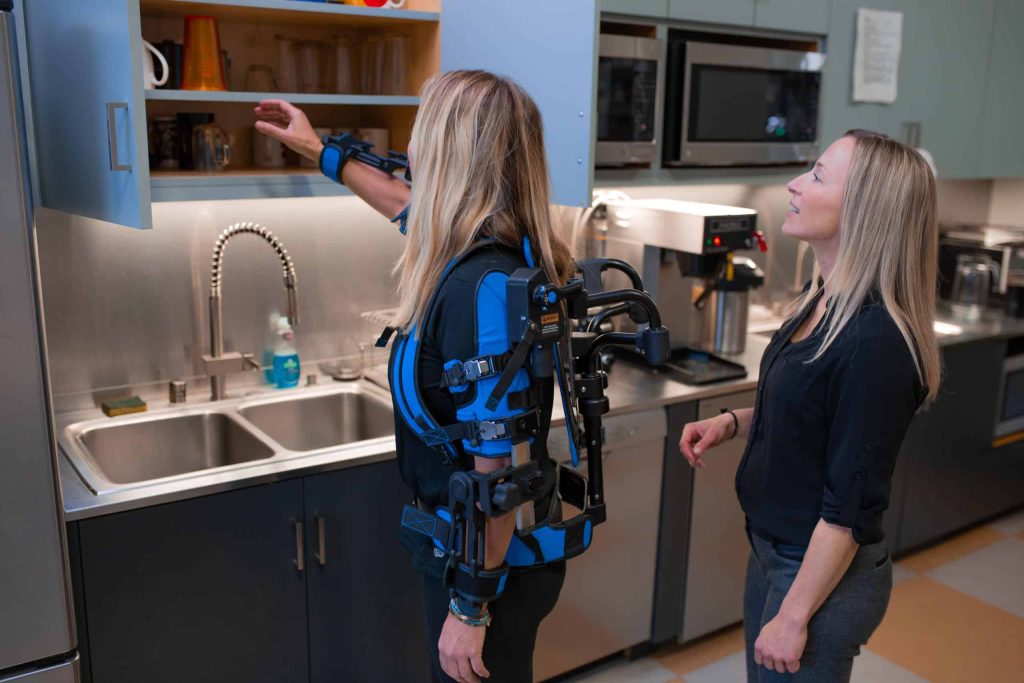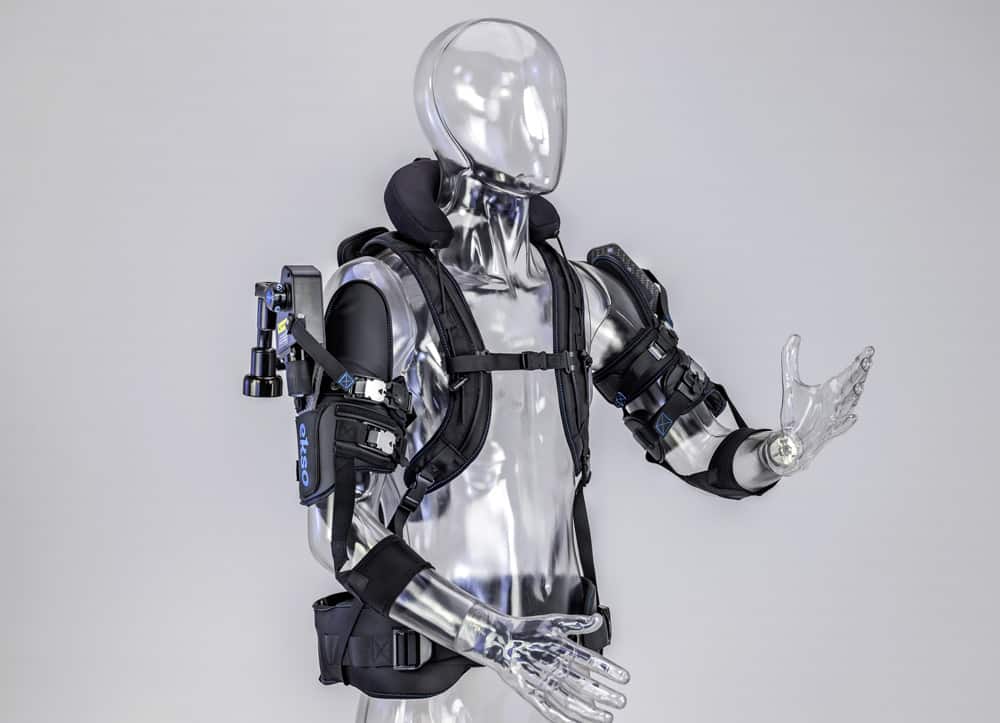Grasshoppers and lobsters have them to protect their vulnerable fleshy insides. Why can’t humans have them too? We’re talking about exoskeletons, and while humans weren’t born with hard shells for protection, technology is trying to play catch-up. Human exoskeletons, an invention that first showed up in the 1960s, is coming into its own, designed for medical, military, manufacturing and industrial applications.
These wearable machines augment human strength and endurance, thereby reducing the risk of worker injury through the transference of weight and load forces from the body to a motorized, external frame. In short, a human exoskeleton makes lighter, easier work of heavy-duty tasks. Perhaps the idea of enhancing humans with metallic frames brings to mind fictional superheroes and villains. In reality, these revolutionary devices are meant to improve the lives of everyday people.
Exoskeletons have existed in nature for centuries, arming anything from cockroaches to crabs with the support and protection they need against predators. Robotic exoskeletons offer that same protection, strength and support for people too.

Here are some reasons why humans need exoskeletons:
To Gain Strength and Endurance
Perhaps you need to assemble an extraordinarily complex product such as an aircraft. Exoskeleton suits allow workers to lift a panel, for example, then rotate it and position it in the precise area. Endurance is also extended, allowing workers to be productive for longer periods of time without debilitating fatigue.
To Be More Flexible
Take victim rescue in the case of an earthquake. You need something extremely flexible to be able to intervene rapidly, remove rubble, and rescue the victim without harming them.
To Regain Mobility
According to the National Spinal Cord Injury Statistical Center, 288,000 people live with a spinal cord injury in this country. The medical costs associated with such injuries can total millions over the person’s lifetime, to be sure, but the pain and limited mobility involved in such an injury can spur feelings of hopelessness and depression. Assistive exoskeletons can give people a new hope and a new way to get around.
To Reduce Strain
Assistive robotic machines such as exoskeletons can assist the lower half of a person’s body, to reduce the fatigue and strain of repetitive bending and lifting, as well as to protect lower backs and knees from injury. Those exosuits designed for the upper body will protect the shoulders, back and neck.
Our wearable EksoVests, for example, can prevent the fatigue and stress for workers in car manufacturing factories that comes from lifting their arms overhead an average of 4,600 times a day. This technology is designed to reduce fatigue and the possibility of injury by supporting and elevating the worker’s arms while they assemble parts at chest height or higher.

To Boost Military Capabilities
The idea behind military-grade exoskeletons is to increase the strength, protection, endurance, and tactical awareness of battlefield soldiers. Such wearable robotic systems can give soldiers the ability to run faster, leap over large obstacles and carry heavier weapons, equipped with sensors and GPS receivers.
To Prevent Musculoskeletal Disorders
Musculoskeletal disorders in workers cost companies billions of dollars every year, not only in healthcare costs but in time off work and lost productivity. Factory workers who use human exoskeletons experience less back and shoulder pain, and are able to be more physically active both at work and at home.
There are many reasons why humans need exoskeletons in today’s world, from workplace and medical benefits to military and manufacturing benefits.
Contact Ekso Bionics
To learn more about the functions of human exoskeletons from Ekso Bionics and how they can help you, we welcome you to contact us at 510-984-1761 or get a free demo online.
